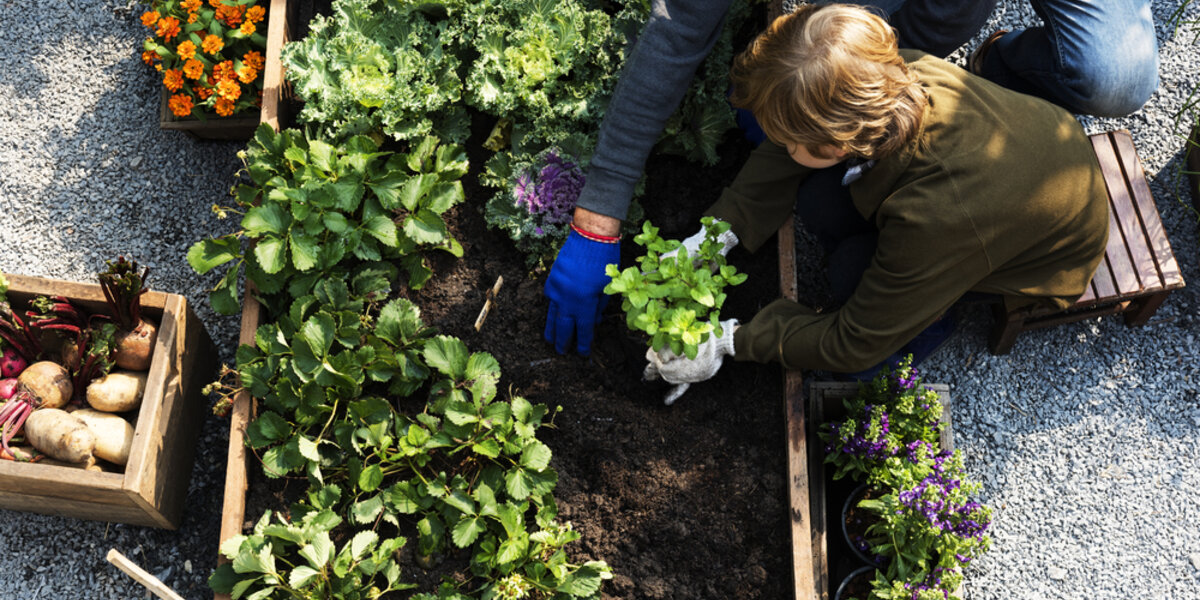Working on Your Green Thumb? Make Your Garden Efficient with These Tips.
Let's Save Energy
Alliance to Save Energy's Blog
Working on Your Green Thumb? Make Your Garden Efficient with These Tips.

The impacts of the COVID-19 pandemic are too numerous to count, but one unexpected positive effect for some families is a renewed interest in home gardening. Between understocked grocery stores and the need for new homebound hobbies, backyard vegetable gardens are having their heyday. With this new interest in home gardening comes the potential for significant energy savings: Supplementing pantry stables with homegrown produce can help reduce your energy footprint by minimizing drives to the grocery store and by reducing reliance on the industrial food chain, a very energy-intensive sector. We may not be able to help with your green thumb, but we can help you make your personal pea patch as energy-efficient as possible.
Saving water saves energy
Delivering water from its source to your hose uses a lot of energy, so by making water-conscious gardening decisions, you can actually help conserve two resources. Here’s how to start:
- Plant smart. Do your research before purchasing seeds or starts to look for regionally appropriate and low water-using varieties. If you’re ordering plants online to stay home, most gardening sites will show watering details, or check-out the EPA’s guide on regional planting.
- Group by water needs. After purchasing plants, group them in your garden by how much water they’ll need. For example, cucumbers require about double the amount of weekly water as corn: by not planting these vegetables next to each other, you can avoid wasting water on the corn just because it has a more demanding neighbor.
- Energy-wise irrigation. When it’s time to water, focus water using your hose or watering can near the roots to reduce waste. If you install an automated irrigation system, look for the EPA’s WaterSense label – it does for water what ENERGY STAR does for energy.
Maintain your garden with efficient tools
Opportunities for efficiency don’t end with thoughtful planting and watering – make sure you’re keeping your garden healthy and maintained with these energy-efficient decisions.
- Efficiently energize your plants. Did you know fertilizer production consumes 1.2% of the world’s total energy on an annual basis? Thankfully, this demanding sector has partnered with the EPA to improve energy management with the “fertilizer focus” program. Just this February, the first two fertilizer plants in the U.S. were recognized with the ENERGY STAR superior energy performance standard – meaning ENERGY STAR labeled plant food is coming to shelves near you.
- Weed right. The most energy-efficient method to keep your garden weed-free is the good ol’ fashioned way: using your hands or manual tools such as claws or dandelion pullers. If you opt for power tools, keep in mind that cordless electric options use much less energy. And for full yard maintenance, check out the Department of Energy’s guide on alternative fuel and fuel-efficient lawn equipment – keeping in mind that mowers consume 1.2 billion gallons of gasoline annually.
No yard? No problem.
Don’t have a backyard and been feeling left out of the quarantine gardening craze? There are still ways to turn your apartment or townhouse into a vegetable patch. Indoor gardening is a popular trend, coming with the added benefit of being productive year-round, but the potential downside of adding to your energy bills. These steps can help off-set any added costs:
- Take advantage of sunlight. Once you’ve secured suitable pots and seeds, the biggest challenge of indoor gardening is making sure plants get enough sun. Make note of the sunniest places in your home and position plants there – or, with small pots, you can move plants around to take advantage of light at different times of day.
- Double benefits of LEDs. If your plants aren’t getting enough light just from windows, using an LED lighting system will help you save on energy costs and is better for your plants. LEDs put out less heat than incandescent bulbs, thus providing needed energy for seedlings without exposing them to too much direct heat.
- Prep for winter. You can have fresh vegetables all winter long if you play your cards right – and traditional energy efficiency measures for your home will help you out. Sealing windows (as simple as buying a tube of caulk) and upgrading insulation will help keep your indoor space climate controlled.
Whether you’re a seasoned gardener or brand new to the world of growing your own leafy greens, we hope these tips help you lower your energy use and energy bills, making this healthy hobby even more sustainable and cost-effective for the whole family.
RECENT BLOG POSTS
STAY EMPOWERED
Help the Alliance advocate for policies to use energy more efficiently – supporting job creation, reduced emissions, and lower costs. Contact your member of Congress.
Energy efficiency is smart, nonpartisan, and practical. So are we. Our strength comes from an unparalleled group of Alliance Associates working collaboratively under the Alliance umbrella to pave the way for energy efficiency gains.
The power of efficiency is in your hands. Supporting the Alliance means supporting a vision for using energy more productively to achieve economic growth, a cleaner environment, and greater energy security, affordability, and reliability.



